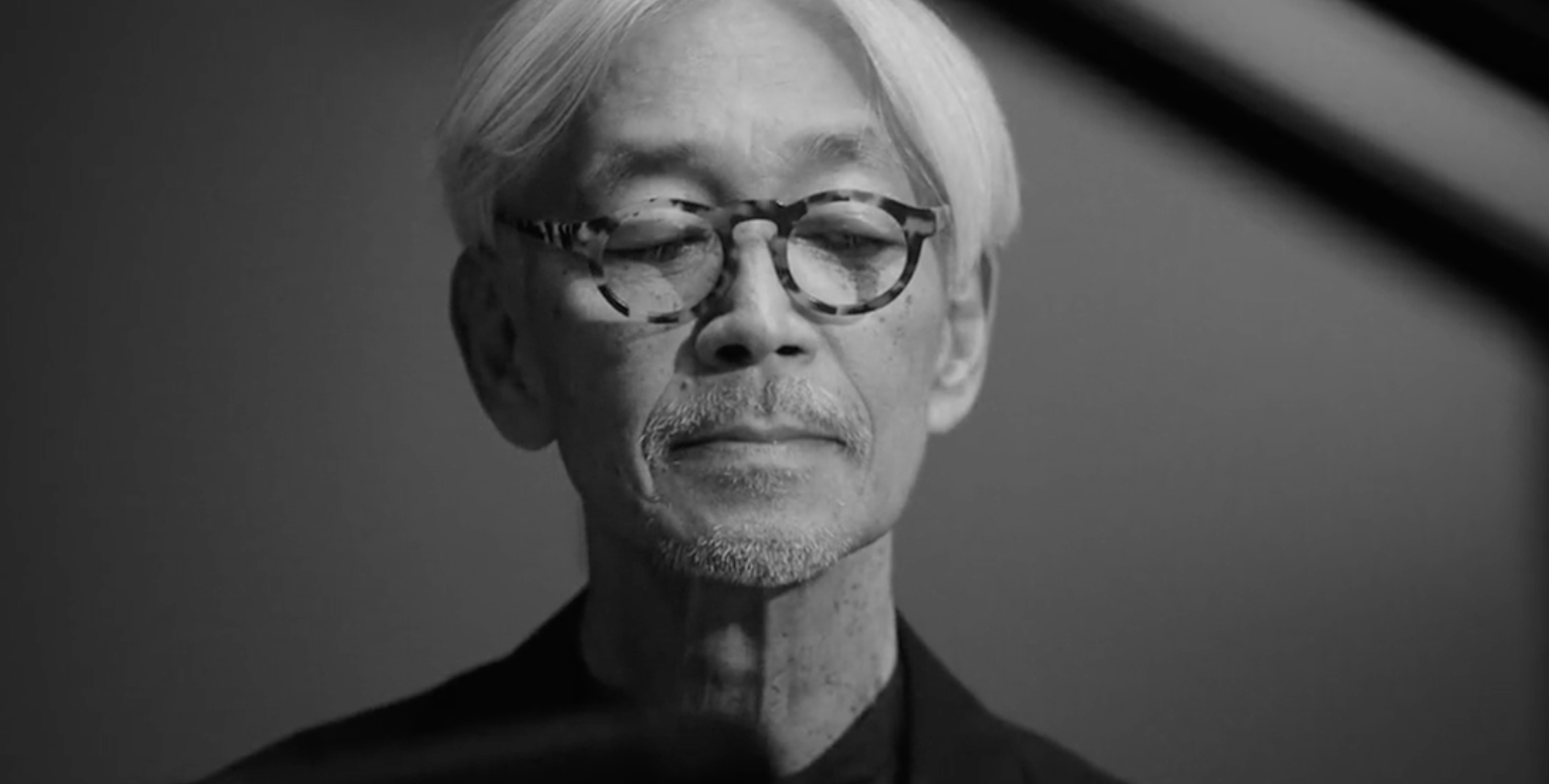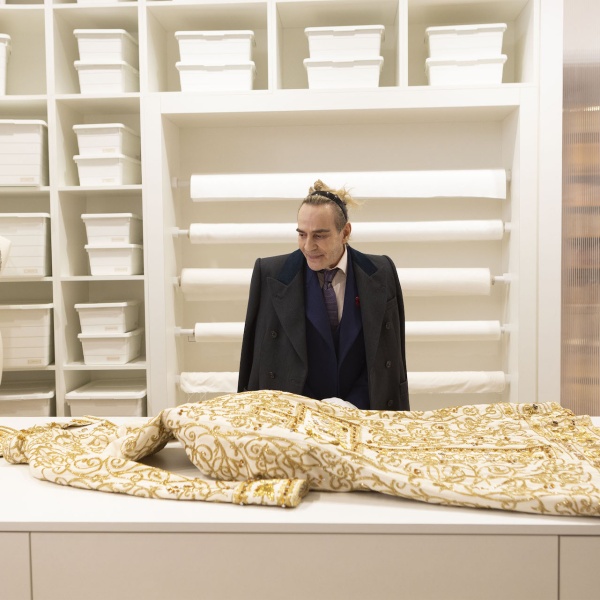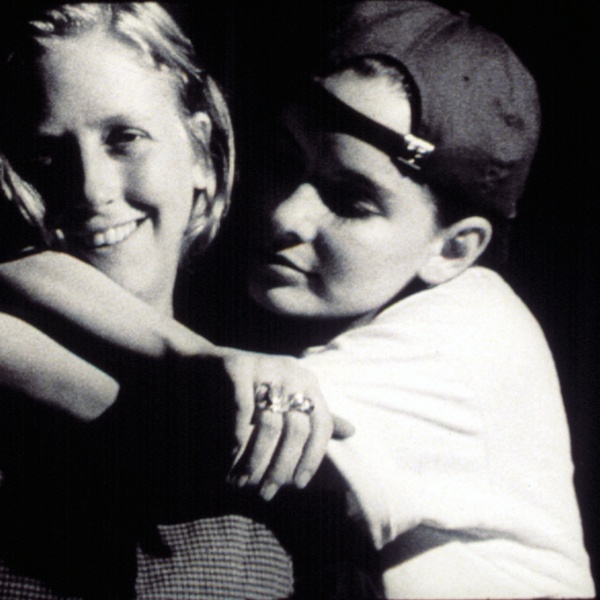
The profound existential context of “Ryuichi Sakamoto: Opus” lays waste to the usual questions regarding concert documentaries, such as whether there is or is not a visual language to match the music. While there are moments in which one could close their eyes to concentrate on Sakamato’s otherworldly piano stylings and not miss much, there are glimpses of what it has all meant to the maestro that redeem a generally uneven split between sound and vision. Indeed, there are parallels to be made here with David Bowie’s music video for “Lazarus,” due to the mortal shiver of seeing a formidable musician playing himself off into the afterlife.
Sakamoto died aged 71 in March 2023 of a cancer that made touring and performing impossible during his final years. “Ryuichi Sakamoto: Coda” premiered at Venice Film Festival in 2017, shedding light on the musician’s process and values at a time when he had a cancer diagnosis and was considering what he wanted to leave behind. “Opus” functions as an elegiac, stripped-back sequel that also stands in its own right. Free of exposition, narrative, and all but a handful of words it is, simply, a piano performance without an audience.
Producer and director — and Sakamoto’s son Neo Sora — capped the tracklist at 20. Sakamoto’s choices, arranged in his own order, were recorded and filmed in lush 4K black and white at NHK Broadcasting Center 509 Studio in Tokyo in late 2022. Curated by Sakamoto from a career spanning five decades, the set list pulls from his pioneering 1970s electronic work in the Yellow Magic Orchestra, film soundtracks “The Last Emperor,” “Wuthering Heights,” and “Merry Christmas Mr. Lawrence,” original new versions of beloved old tracks and selections from his final album, “12.” Thus we are afforded the intimate sight of a man who gave his life to music making a final offering.
Sakamoto is a composed presence with white curtain-like bangs, thick-rimmed tortoiseshell glasses, bowed head, and a sweet face. A lamp directed at the piano keys makes the ivories pop amidst so much grayscale and black. Unlike many a showman virtuoso, Sakamoto makes his work seem like child’s play, still tears naturally fell from my eyes as he conjured emotions we don’t yet have names for. (Maybe in a thousand years…) “I need a break. This is tough. I’m pushing myself,” he says during the second half. This lands like a rug pull, but then, of course, it takes extraordinary effort to create the illusion of ease…and the illusion of health. These words are an outlier in a film that otherwise uses silence in between tracks as punctuation, building in negative space to heighten the core focus on the musician and his instrument.
Sora (understandably) settles on not fucking up the bag on this high-stakes occasion, and keeps his personal filmmaking ambitions humble. By and large, the camera functions as a magnetized admirer. It is jarring when it lingers on, say, the base of the piano stool, slowly tracking upwards to reveal its human cargo. Seemingly, Sora has chosen to inventory every tool on stage, coloring ordinary objects with the significance of their presence on this occasion.
Sakamoto plays a Yamaha grand piano with microphones crawling like ivy over its elegant bulk, and sheet music laid out flat on top. When necessary, he attaches metal pegs to the exposed piano strings with an effortful precision, all of his energy flows to coaxing the best out of the instrument. If the graceful yet listless camera movements sometimes create the impression of a particularly soothing screensaver, it is of little importance.
This is not the type of concert film to be compared with dynamic innovations in the form, such as Jonathan Demme’s “Stop Making Sense” or “Spike Lee’s American Utopia” (to draw exclusively from Talking Heads material); it has more in common with a deathbed confession. The whole point is that someone is bearing witness.
Sora betrays his understated approach for a symbolic flourish of a final shot, a cheap trick that seems excessively so in contrast with the stark power of Sakamoto’s music. To take a more generous tack: it was, perhaps, included for the benefit of viewers unaware that this is a swansong, as the film is uncluttered by narrative exposition. There are no introductory titles and only a simple epitaph by way of closing titles.
Instead, it is Sakamoto’s fingers that do the talking. How artists are able to communicate ineffable sensations is an unsolvable mystery. Why is it that certain notes played in a certain way by a certain someone can make us feel connected to something higher? This question is certainly beyond my paygrade and all I can do is reach for little scraps of phrases, like “heady deceptively simple beauty” as I urge you to show up for a man saying goodbye in a way that only he can.
Grade: A-
“Ryuichi Sakamoto: Opus” premiered at the 2023 Venice Film Festival. It is currently seeking U.S. distribution.






